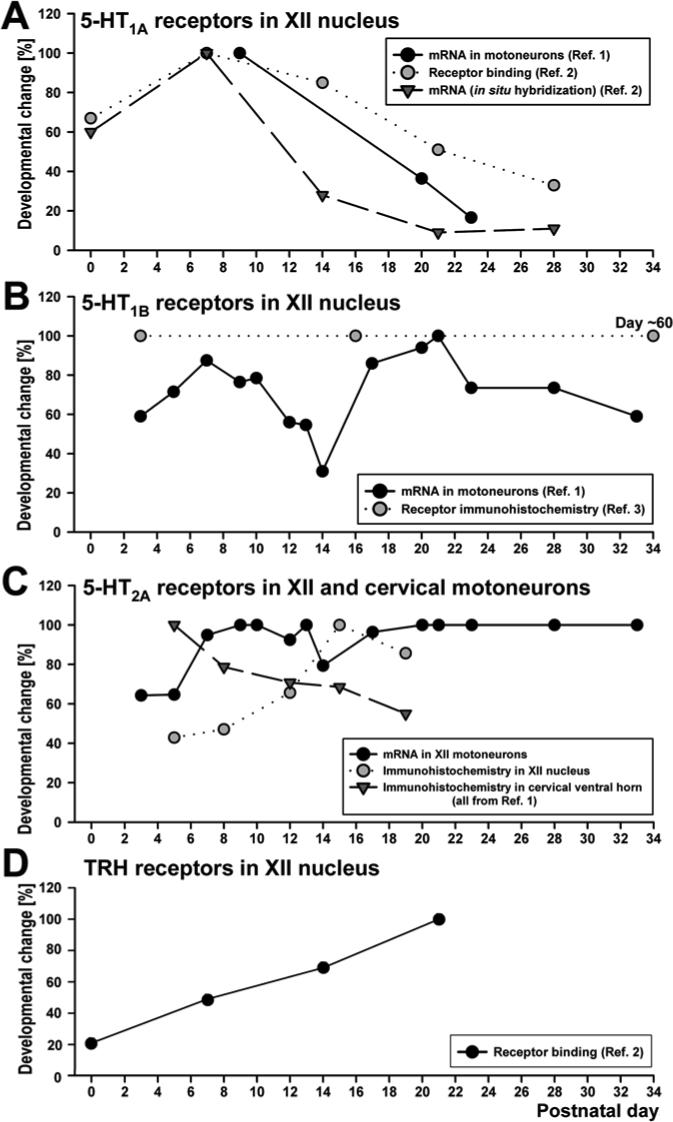Fig. 2.

Time course of postnatal changes in expression of major serotoninergic and other related receptors in orofacial and spinal motoneurons. The diagrams summarize data for selected orofacial and spinal motoneurons. Since the results from different sources used different scales and units of measure, we normalized published results relative to the highest value in each study. The data used to compile the diagram were derived from: Reference (Ref.) #1 - proportion of XII motoneurons expressing 5-HT1A, 5-HT1B and 5-HT2A receptor mRNA, and 5-HT2A receptor immunohistochemistry in XII and upper cervical motoneurons (Volgin et al., 2003); Ref. #2 − 5-HT1A receptor mRNA and 5-HT1A and thyrotropin releasing hormone receptor binding in the XII nucleus (Bayliss et al., 1997); Ref. 3 − 5-HT1B receptor immunohistochemistry (Berger and Huynh, 2002). Of general note here are three points: (1) the time course of expression differs among distinct receptor subtypes for the same neurotransmitter even within a single motoneuronal pool (e.g., 5-HT1A, 5-HT1B and 5-HT2A receptors in XII motoneurons); (2) the same receptor can follow different developmental time courses in orofacial (XII) and spinal motoneurons (e.g., 5-HT2A receptors in the XII nucleus and cervical ventral horn); and (3) some receptors can exhibit very large and biphasic changes, at least at the mRNA level, within just a few days (e.g., 5-HT1B receptor mRNA in XII motoneurons).
